Just over a week ago I endeavored to ride my bike from San Francisco to Los Angeles over the course of seven days to raise funds for programs that provide HIV/AIDS education, prevention, research and medical services, medication and counseling for those who seek help at the LA Gay and Lesbian Center and the San Francisco AIDS Foundation. At my not-so tender age of 44 the decision to take on the AIDS Lifecycle (ALC) for a third time felt incredibly daunting despite the many mornings this winter and spring that I spent training -- in and out of arm and knee warmers (depending on the weather), lathered in sun screen and sporting heavily-padded spandex that still failed to save my back end from the evil doings of the bike seat. All of the training in the world could hardly prepare one for the physical and emotional roller coaster that is ALC. And that’s just part of why I’m so drawn to it.
I grew up and came out in the age of AIDS. The first time I recall being aware of HIV/AIDS was during a conversation that took place among coworkers at my first job at a family-owned bakery in the rather tiny town of Plainville, Conn. I was 16 and it was 1984. With no malice or ill-will the people at my job in my suburban town truly pondered if any of us was at risk from HIV/AIDS simply from touching a doorknob or sitting on a toilet seat. The science that disproved such assumptions may have been out there but in our little world we didn’t know it. So much fear accompanied the word AIDS.
A few years later I came out, and the shaping of my lesbian identity very much hinged on trips I took to New York City, particularly those visits that took me to my first Pride parades at which AIDS activism was front and center. The immediacy to not merely end the epidemic but to understand it and to force the government to acknowledge there even was one (President Reagan had still not uttered the words HIV or AIDS publicly at that point) was more powerful than anything I’d known prior or since those nascent days.
At the time I was visiting the city fairly frequently my friends Ron and Mac lived in artists’ housing at Manhattan Plaza on 42nd between 9th and 10th. It was 1987, and for the first time in decades the wait list for apartments there had dwindled to nothing. The residents – actors, dancers, choreographers, writers, musicians—were dying, and there were apartments available. Four years later Mac died too. Later, I would lose another actor / artist friend, Michael, to AIDS. Even as a young lesbian, for whom there were literally no statistics about infection rates, my youth was shaped by those who were sick and those we all lost.
Today, several of my friends are positive, including my two best friends. Thanks to research, education, meds and access to medical services theirs is not a death sentence, although they were diagnosed nearly 20 years ago. Still, stigma abounds around HIV/AIDS. While immeasurable progress has been made in the 31 years since the first infection was documented, there is still so much more to be done.
I rode in my first Lifecycle in 2008 for the challenge -- to push my limits and myself. But beyond that I rode and raised funds to give back, to honor those I’d known and lost, and in some ways, to honor my youth. I returned to Lifecycle in 2011, and before I left closing ceremonies I signed up for this year. After rolling into ceremonies just a few days ago, I stepped up to the registration tent and signed up for next year’s Lifecycle. It’s just a part of me now. It’s what I do.
AIDS Lifecycle 2012 Diary - Day 1:
At the ungodly hour of 5 a.m. on June 3, 2,200 riders and 500-plus roadies gathered at the Cow Palace in South San Francisco to begin our journey that would eventually unfold into emotional and physical binaries of strength and pain, euphoria and sorrow and much more.
Opening ceremonies included some requisite stretching, we were, after all, going to be riding 87 miles including up the twisting, turning hill on Route 92. Our route maps clocked the mileage at 82.5 miles but my computer detected a good four more miles or so that were not accounted for in the route map. A young woman, who was riding, spoke about her mother, who is HIV positive had battled AIDS and breast cancer. Veterans carried the "Riderless Bicycle," there to symbolize those who are no longer with us.
We headed out of the Cow Palace en masse to cheers and the literal clanging of cowbells. The trek had begun. I began day one in knee and arm warmers and a jacket as the trip from San Francisco to Santa Cruz promised to be cool, but by rest stop 1 I was peeling away some of my layers.
At rest stop 1, about 18 miles out we were greeted by Catholic schoolgirls, men dressed as nuns and priests and the like. Each rest stop is themed, and the crews that run the rest stops go all out to make every inch of the ride as much fun as possible.
From there we made our way toward the ever-looming Route 92 that took us up into Half Moon Bay, a place that holds special sway for me as my mom and I once went horseback riding there on the beach in the early 90s. Even on my third Lifecycle I was compelled to stop and snap a pic of the Half Moon Bay sign and text it to her. At the top of 92 we were greeted by cheerleaders shouting words of encouragement and waving pride flags. Close to the end of the climb a cheerleader in drag handed me a fresh strawberry to help get me up those last few feet.
Next, we descended down into Half Moon Bay to rest stop 2 for a quick water, port-a-potty and sunscreen-applying break before riding on to lunch on the beach. I got to lunch and waited patiently for SheWired’s associate editor Boo Jarchow, who, regretfully, managed to pick up a small nail in her back tire. Luckily she was able to walk her bike to lunch and buy a new tire from the amazing volunteer bike tech crew that’s at each rest stop and lunch along the route.
The remainder of the day was spotted with rolling hills (some more arduous than others), and breathtaking oceanside riding. Descending into Santa Cruz dozens of windsurfers were spotted across the sea and sky - a truly whimsical thing to behold. Despite problems with my saddle, namely that I’ve yet to figure out the right combination of saddle and shorts that doesn’t feel like the Marquis de Sade designed them, by rest stop 4, with just about 10 miles to go, I knew I had Lifecycle 11 Day One in the bag. I fairly sailed into our first campsite at Harvey West Park in Santa Cruz, but not before I was completely moved by an older woman standing on the side of the road holding a picture of her brother she’d lost to AIDS decades before. She thanked me, and all of the other riders, for riding. That’s something one hears a lot on Lifecycle, “Thank you for riding.” And it’s so humbling, because, really, riding and raising money feels like the least I can do. Later I learned that she’s been out there in Santa Cruz every ride for 17 years. It’s what she does.
Opening Ceremonies at the Cow Palace.
Our friend Doreen Gonzales and others carry the riderless bicycle.
Boo poses at rest stop 1
Our fried Tyler with veteran training ride leader Chris.
More on next page...
\\\
(continued)
Boo with training ride leader Stanley.
Just one of the nuns passing out holy water.
Rolling hills.
More on next page...
\\\
(continued)
Hot roadie.
Riders at the top of Route 92.
An all too familiar line for me.
Boo and I pose at bike parking.
The amazing volunteer lunch crew!
More on next page...
\\\
(continued)
The day one finish line.
More on next page...
\\\
(continued)
There I am giving a high-five.
Tent city.
Bike parking.
Day 2 on next page...
\\\
(continued)
AIDS Lifecycle 2012 – Day 2:
On a crisp, overcast morning with what appeared to be signs of clearing, we set out on the longest day of the ride. Day two would take us 110 miles from Santa Cruz through the Steinbeck Country of artichokes and to the famed Otter Stop and mission somewhere around mile 80. I don’t quite recall the mileage, as I, like many of the riders on that particular day two, didn’t quite get to ride that far. Mother Nature had other plans for us.
We began a leisurely ride of Santa Cruz – the morning traffic is heavy so it’s a bit slow going from the start to the first rest stop at about 18 miles in. To break up the monotony of what feels like endless calling out “stopping, slowing and rolling” in rush-hour traffic there’s a pit stop at The Ugly Mug in Santa Cruz, where the coffee shop owners entice riders with real, strong, free coffee. Plus, there’s a DJ blasting tunes, so many riders dismount there and dance for a bit before heading back out.
Not too much further down the road from The Ugly Mug there’s an elementary school where the teachers line up some of the kids to high five the riders as we pass. I think I got every hand in that gauntlet of kids this year. For them, there’s no stigma, no strangeness about 2,500 riders cycling for AIDS. They’re just so excited to see us.
I got to rest stop 1 and did my usual routine of refilling, hitting the port-a-potty and shoving some more food down my gullet. “Drink before your thirsty, eat before you’re hungry,” is one of Lifecycle’s mantras.
There was a cool ocean mist around me as I rode out of the rest stop, something I was sure would pass, as my iPhone app did not indicate inclement weather. But really, the mist was the best of it. Within a few miles sheets of frigid rain fell on my helmet and soaked my jersey. It was one of the few days I hadn’t worn my trusty, orange Cannondale jacket. I had opted to go light since it was such a long day. I didn’t want to carry anything extra 110 miles and I was stuck riding in the rain in just a jersey and shorts.
For 15 miles I pedaled in the rain past artichoke fields and farm workers with semis whizzing past me. One by one riders began to fall off to the side of the road internally debating if they should continue to ride or do a thumbs down signal and “sweep” to the next rest stop. I made it to the Moss Landing Café, famous for its fried artichokes where I tried to meet up with Boo. A few miles earlier she had texted me to say she was at the restaurant but when I pulled over to text her back my hands were shaking so badly in the rain that I couldn’t’ get my fingers on the buttons. Eventually Boo and I found each other at the tiny café and ended up hunkering down there with about 20 people who became our little family for about three hours. Between Boo and I we had three hot chocolates, a coffee and three orders of fried artichokes. Really, once I got in the building and warmed up to a degree I just couldn’t get back on my bike in the rain.
While the decision to give up on riding any number of miles on Lifecycle is never a light one (something compels many of us to just keep on riding despite aches, pains and fatigue) I was happy that the decision was taken out of my hands as the ride organizers decided to close the route for safety reasons. Boo and I had it lucky in the rain as we spent most of our time indoors. Others rode as far as rest stop 2 where they donned trash bags, Mylar blankets and any number of found objects to keep dry and warm.
Approximately 800 early risers and brave souls had made it far enough ahead that they were able to ride in the entire way to King City despite an early day of rain and a full day of massive gusting winds.
That night at camp announcements I heard amazing anecdotes about the grace of people in what, in the moment, felt a bit like a disaster movie. A church down the street from the lunch stop opened its doors and handed out blankets and pizza. Hundreds of riders rode out the storm there. In return, the riders took up a collection to help clean the muddied church, but church officials opted to give the money to its homeless program. A student center at a college nearby also took people in. There, and I wish I’d seen this; the boys put together an impromptu Mylar blanket fashion show. Although the route was cut short, dashing many riders’ dreams of making their first century ride, the spirit of Lifecycle was alive and well.
Bike parking in the a.m.
Sea lions in Salinas just before we stopped.
More on next page...
\\\
(continued)
Keeping warm.
Some of our artichoke restaurant family.
Me and Boo after our third hot chocolate. Trust me, we were still soaked and cold.
The Otter Pop Stop that only a few hearty souls were able to ride to see.
Hunkering down on the bus to camp.
Photos by Boo Jarchow unless credited otherwise.


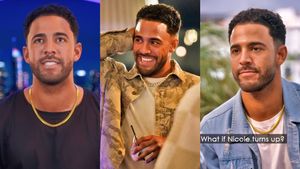

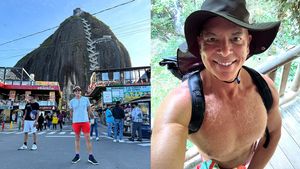


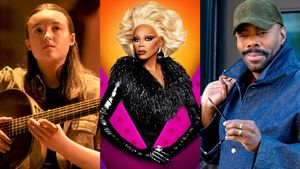
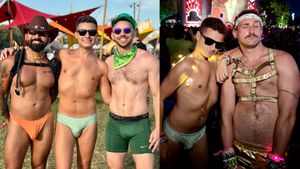


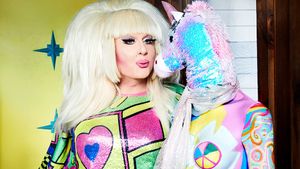




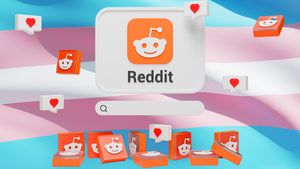



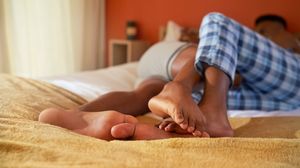









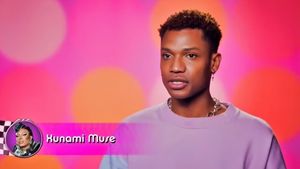

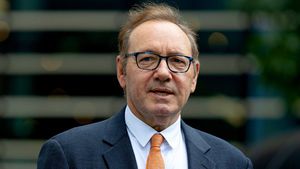
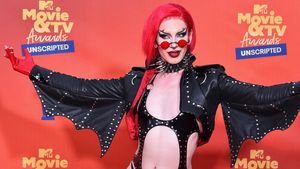



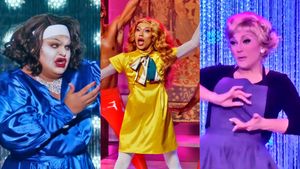









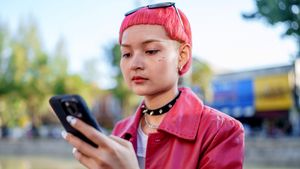




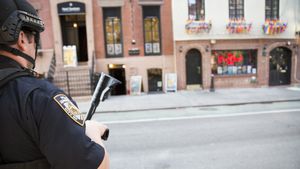









































 Cindy Ord/Getty Images
Cindy Ord/Getty Images

























